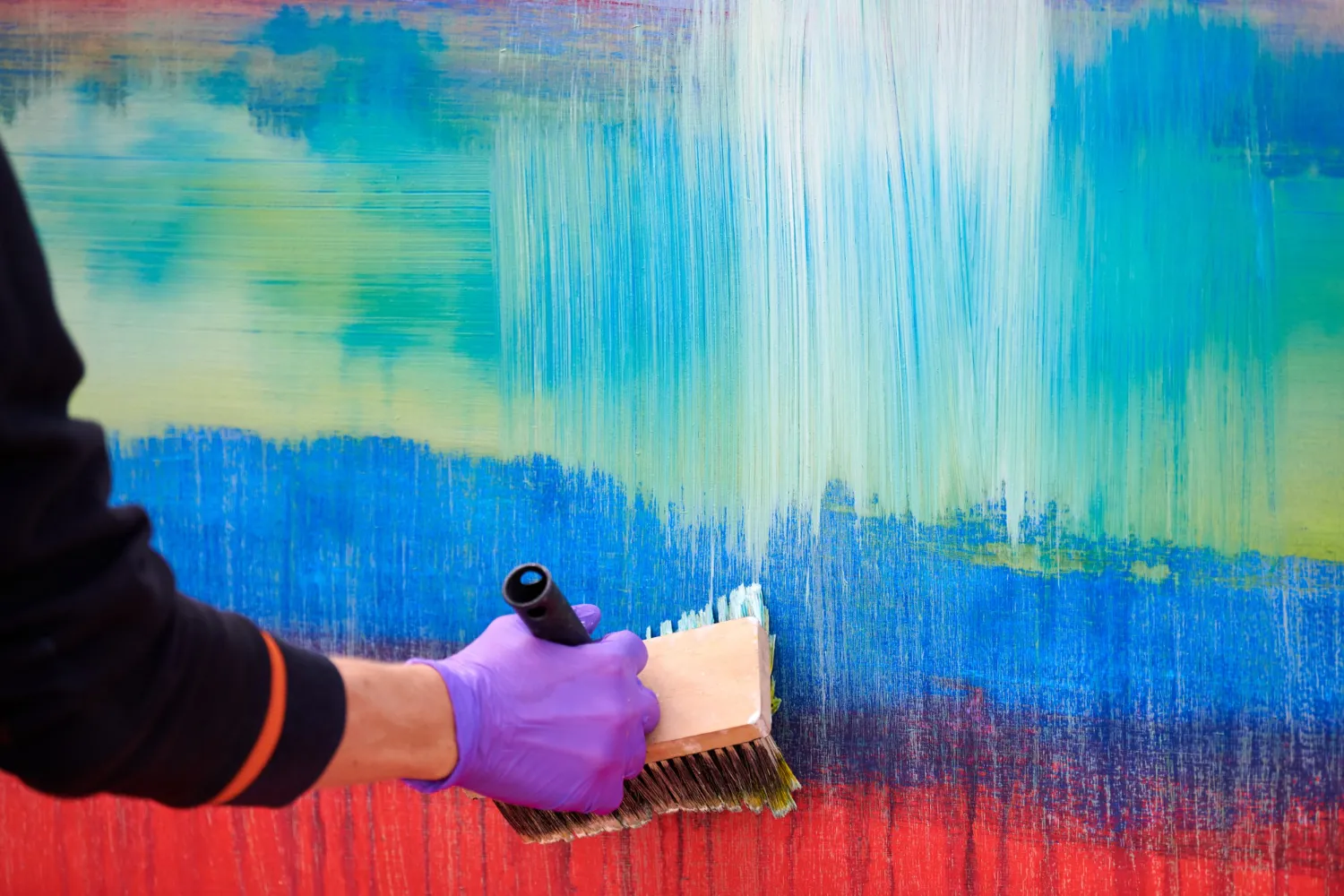Are you looking to breathe new life into your living space without the hassle of removing old wallpaper? Painting over wallpaper might just be the solution you’ve been searching for. While the idea may seem unconventional to some, it can be a time-saving and practical approach, especially when dealing with well-adhered wallpaper. In this guide, we’ll walk you through the process of painting over wallpaper, ensuring a seamless and stylish finish for your walls.

The Benefits of Painting Over Wallpaper
Preservation of Wall Integrity
Opting to paint over existing wallpaper can help preserve the structural integrity of your walls. Removing wallpaper, especially if it has adhered for a long time, risks damaging the underlying wall surface. By painting over the wallpaper, you avoid potential scrapes, gouges, or other forms of damage that can occur during the removal process. This ensures that your walls remain sturdy and intact, maintaining their longevity and structural soundness.
Time and Effort Efficiency
Painting over wallpaper saves considerable time and effort compared to the labor-intensive task of removing it. Wallpaper removal often involves using chemicals, steamers, or scraping tools, which can be time-consuming and physically demanding. By choosing to paint over the existing wallpaper, you bypass this arduous process, allowing for a quicker and more efficient wall makeover. This is particularly advantageous for individuals with busy schedules or those seeking a convenient DIY solution.
Cost-Effectiveness
Painting over wallpaper offers a cost-effective alternative to wallpaper removal followed by wall preparation and painting. Removing wallpaper typically requires purchasing specialized tools, such as steamers or chemical strippers, and investing in wall repair materials. By painting directly over the existing wallpaper, you eliminate these additional expenses associated with labor and materials, making it a more budget-friendly option for home improvement projects.
Versatility in Design
Contrary to common belief, painting over wallpaper provides ample opportunities for creative expression and design versatility. With proper preparation and techniques, you can achieve smooth, professional-looking walls that serve as a versatile canvas for various decorative styles and color schemes. Whether you prefer bold accent walls, subtle textures, or intricate patterns, painting over wallpaper allows you to customize your space to suit your aesthetic preferences and design vision.
Sustainable Solution
In today’s environmentally conscious world, sustainability is a crucial consideration in home renovation projects. Painting over wallpaper promotes sustainability by minimizing waste and repurposing existing materials rather than discarding them. By adopting this eco-friendly approach, you not only reduce your environmental footprint but also contribute to the conservation of resources. Additionally, choosing sustainable renovation practices can enhance the overall value and appeal of your home in an increasingly eco-conscious market.
Preparing Your Walls for Painting
Assessing Wall Condition
Before starting the painting process, it’s crucial to assess the condition of the existing wallpaper. Check for any signs of peeling, loose seams, or damage. Repair any issues by re-adhering loose wallpaper sections or using wallpaper repair adhesive. Ensuring the wallpaper is firmly attached creates a stable base for painting and prevents potential issues during the painting process.
Sealing and Priming
Properly sealing and priming the walls are essential steps for achieving a flawless paint finish over wallpaper. Seal the edges of the wallpaper with a clear caulk to prevent peeling or lifting. Consider applying a coat of oil-based primer over the entire surface to seal the wallpaper adhesive and promote better paint adhesion. This creates a smooth and uniform surface, ensuring the paint adheres well and provides a lasting finish.
Sanding and Smoothing
To achieve a seamless paint finish, gently sand down the seams and any uneven areas of the wallpaper. This step helps blend the texture of the wallpaper and creates a smooth surface for painting. Pay close attention to areas where the wallpaper seams meet to ensure they are flush with the wall. Smoothing out any imperfections contributes to professional-looking results and ensures the paint goes on evenly.
Choosing the Right Paint
Selecting the appropriate type of paint is crucial for a successful paint job over wallpaper. Opt for high-quality latex or acrylic paint with good adhesion properties and durability. Consider the room’s usage and moisture levels when choosing the paint finish. Matte or eggshell finishes are ideal for most interior walls, providing a smooth and easy-to-clean surface. Consult with a paint specialist to determine the best paint type and color for your project.
Applying the Paint
Once the walls are properly prepared, it’s time to apply the paint. Use high-quality paint brushes or rollers for smooth and even coverage. Start at the top of the wall and work your way down, using overlapping strokes to ensure uniformity. Allow each coat of paint to dry completely before applying the next one. Multiple thin coats are preferable to thick coats, as they result in a more even finish. Take your time during the painting process to achieve professional-looking results that enhance the overall appearance of your space.
Elevate Your Space with Painted Wallpaper
Painting over wallpaper offers a convenient, cost-effective, and versatile solution for revitalizing your walls and transforming your living space. By following proper preparation techniques and using quality materials, you can achieve professional-looking results that enhance the beauty and functionality of your home. Whether you’re a DIY enthusiast or seeking professional assistance, painting over wallpaper opens up a world of design possibilities without the hassle of wallpaper removal. Dare to unleash your creativity and elevate your space with painted wallpaper today!





